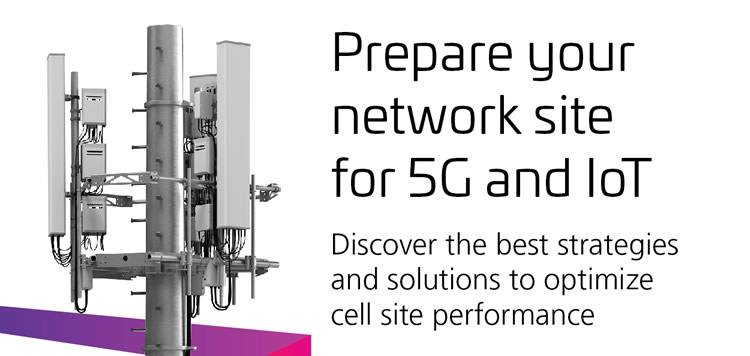Michelle Donegan is a tech writer who has covered the communications industry for more than 25 years on both sides of the pond. Having worked for various industry titles, including Communications Week International, Total Telecom and Light Reading, she specializes in mobile network technology trends.

As mobile operators expand 5G deployments to cover more parts of the U.K., one of the ways they can cut costs on the network build is by sharing space on cell site towers with other operators. But network sharing is complex with many different technical options, and each comes with trade-offs. A new ebook published by CommScope aims to clarify site sharing techniques to help operators devise the right strategies for their networks.
Network sharing – a.k.a., co-siting or colocation – isn’t new and has been used in 3G and 4G networks. As CommScope explains, it is essentially an agreement between mobile operators to use common infrastructure, such as antennas, base stations, backhaul capabilities as well as core networks to reduce costs. Network sharing is estimated to reduce CAPEX and OPEX spending by 10 percent to 40 for each operator involved.
As cell sites are increasingly owned by independent tower companies, rather than operators themselves, operators often lease and share space on towers. Tower space is at a premium and every site has unique physical limitations that create challenges.
The amount of cost savings operators can achieve depends on the type of sharing agreement. There are three main network sharing models:
- Site sharing. This is a common form of network sharing that involves basic infrastructure assets such as the land on which the site is located, tower space, space in cabinets as well as utility connections to the site.
- Passive sharing. Non-electronic, passive components are shared, such as antenna and transmission lines, tower-mounted amplifiers and other radiofrequency conditioning equipment.
- Active sharing. Not as common as passive sharing, active sharing means the active electronic infrastructure and radio spectrum used in the RF path are shared. This includes base station radios and controllers, as well as radio design and planning services. Examples of other resources that can be shared include the core network, content platforms and billing systems.
In addition to these sharing models, national roaming is also considered a form a sharing. To cover broader areas, operators can agree to share coverage costs based on geography.
CommScope’s ebook provides a deep dive into the technical aspects of these network sharing models and offers practical solutions. Whether operators are enhancing coverage and capacity of existing 4G networks or building out new 5G coverage, network sharing in its many forms is bound to play a part in deployment strategies.
50% off Lyca Mobile’s Pay As You Go plans
Lyca Mobile’s cheap Pay As You Go deals include roaming and international minutes.









